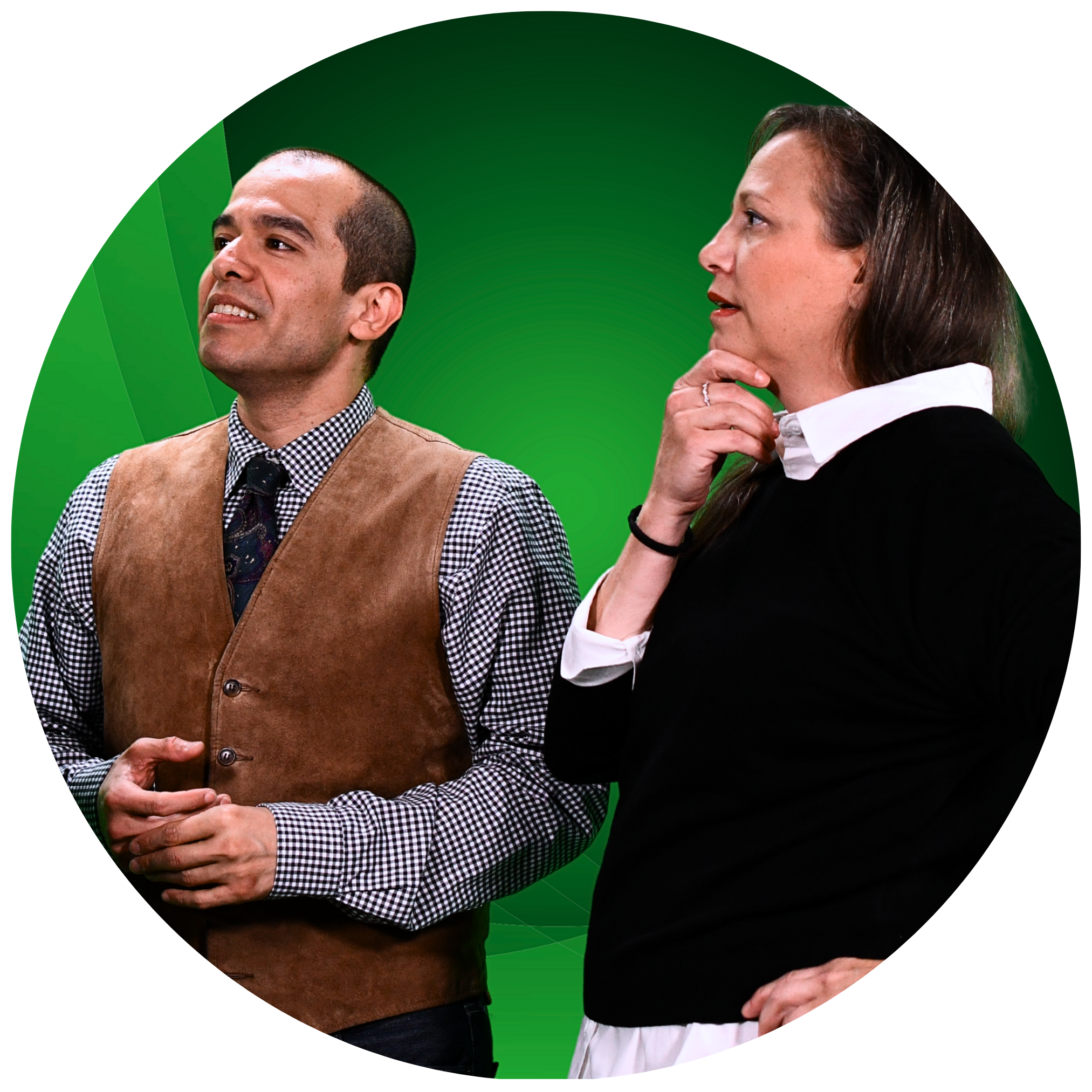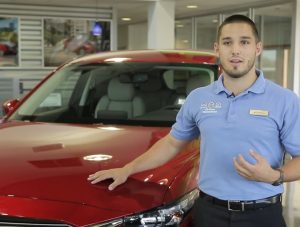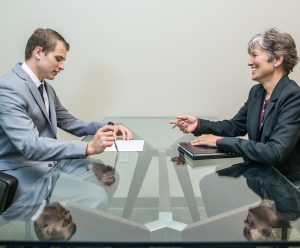Jodie L. Ferguson, Ph.D. and Cesar Zamudio, Ph.D.


INTRODUCTION
Now, we will take a look at personal selling. When you hear ‘personal selling,’ you might first imagine a door-to-door salesman you’ve met before who was selling pest control or some other product or service. While it’s true that door-to-door sales is a form of personal selling, you’ll soon see how this category includes much more!
A purchase occasion that illustrates the value and intricacy of personal selling is buying a new or used car. Since a car is a complex product, has a variety of options to choose from, and has a purchase process including many steps (including negotiation),  the salesperson is expected to have a high level of relevant expertise and knowledge they can communicate to customers. A smart car salesperson also has to strike a balance between being too pushy or too “hands-off” if they want to make the sale. Hopefully you can see from this example that personal selling has many dynamics at play which all contribute, to a greater or lesser degree, to the success of a company’s operations.
the salesperson is expected to have a high level of relevant expertise and knowledge they can communicate to customers. A smart car salesperson also has to strike a balance between being too pushy or too “hands-off” if they want to make the sale. Hopefully you can see from this example that personal selling has many dynamics at play which all contribute, to a greater or lesser degree, to the success of a company’s operations.
PERSONAL SELLING DEFINED
Personal selling is a person-to-person, two-way communication between a buyer and seller, with the objective of making a sale and building a relationship with the buyer.
PERSONAL SELLING AND THE MARKETING MIX
Personal selling is one of the elements of the promotional mix and is a major force for building interpersonal relationships in marketing. Instead of a one-way, mass communication like advertising, person-to-person communication allows the buyer to be part of the brand’s communication process and allows each communication encounter to be customized. Personal selling lends itself well to negotiation in price setting where the customer has some say in what the final price is. With a sales associate working with the buyer, terms of delivery can be another negotiation point and the sales associate can also provide details of more complicated delivery processes. Also, personal selling may allow for a customized product offering where a sales associate can work with the buyer to get a desired mix of attributes in the product.
B2B exchanges are oftentimes supported by personal selling because, in contrast to the consumer market, the B2B market is typically more geographically concentrated, the buying process is more formalized, the purchases are more complicated, and there are higher volume and dollars per purchase—and therefore greater risk. Personal selling can help build relationships with the B2B buyer, present and demonstrate product offerings, explain terms of exchange, be there for customer service post-exchange, and guide the buyer step by step through the purchasing process.
TRADITIONAL VS. RELATIONSHIP SELLING
For many firms, relationship selling is preferred to traditional selling. Traditional selling is typically one salesperson working on their own to make a sale, whereas in relationship selling, salespeople work in teams to make sales. In traditional selling, the focus is on single, discreet purchases while the focus in relationship selling is to build relationships and promote ongoing sales.
THE SALESFORCE
A salesperson is an individual who represents a company or an organization and performs personal selling tasks such as prospecting, communicating, selling, servicing, information gathering, and relationship building (Armstrong and Kotler 2020). The salesforce is made up of the individual salespeople in an organization. If you’ve ever seen the television show, The Office, you’d remember there were multiple different salespeople at Dunder Mifflin: Jim Halpert, Dwight Schrute, Ryan Howard, Andy Bernard, Phyllis Vance, Stanley Robinson, and Pam Beesly. Together, this cohort made up the salesforce of the Scranton, PA branch of the paper company.
Salesforce management involves analyzing, planning, implementing, and controlling salesforce activities. Salesforce management includes the management and oversight of the individual salespersons that make up the salesforce. There are different ways to segment the salesforce structure: territorial, product, and market (Armstrong and Kotler 2020). A territorial structure involves assigning salesforce members to geographical areas to focus sales in. A product structure involves salespeople focusing on select product offerings to sell to the client base. Finally, a market structure is one in which the salespeople are assigned to sell to certain customers or industries.
THE STEPS OF THE PERSONAL SELLING PROCESS
There are seven steps of the personal selling process:
- Prospecting (cold calling, qualifying leads)
- Preapproach (objectives)
- Approach
- Presentation (deck and demonstration)
- Handling objections
- Closing (negotiations)
- Follow up (delivery, customer service)
Prospecting involves gathering leads, or people and organizations (clients) who may buy the seller’s products. Sometimes the clients are customers who have shopped with the organization in the past, and sometimes the salesperson engages in cold calling, where the salesperson goes after leads in which no prior relationship has been established.
To illustrate the steps of the selling process, imagine James needs a new car. Prospecting occurred with James when a local car dealer identified him as a repeat service customer for his existing Honda Accord.  In this case, James was an existing customer, and the Honda dealer had his record of service history, the age of his current Accord, and his contact information. The dealer’s customer relationship management software had flagged James as a potential buyer of a new Honda. The dealer then sent James a mail flyer about possible Hondas that may be of interest to him. Once James received the flyer, he decided to go visit the dealership to inquire about the Hondas available.
In this case, James was an existing customer, and the Honda dealer had his record of service history, the age of his current Accord, and his contact information. The dealer’s customer relationship management software had flagged James as a potential buyer of a new Honda. The dealer then sent James a mail flyer about possible Hondas that may be of interest to him. Once James received the flyer, he decided to go visit the dealership to inquire about the Hondas available.
Once a lead has been established by the client or potential client showing interest, the lead may need to be qualified. Qualifying a lead involves making sure that the client or potential client has the funds and opportunity to make the purchase. When James visited the Honda dealership, he was met by a finance manager to do a qualification check before the salesperson progressed with the visit. James’ credit was run and he was found to be a good fit for financing a new car with the dealership.
Salespeople engage in the preapproach work to gather as much information as possible before reaching out to the client or prospective client. In the approach, the salesperson greets and engages with the person or people interested in making a purchase.  The approach involves gathering more information and getting questions answered so that the salesperson can prepare a presentation of the sales offering. James’ salesperson had a list of questions that she asked James about his car needs and preferences, such as what is important to him when buying a new car, how much traveling he plans to do with the car, and how he prefers to listen to music in the car.
The approach involves gathering more information and getting questions answered so that the salesperson can prepare a presentation of the sales offering. James’ salesperson had a list of questions that she asked James about his car needs and preferences, such as what is important to him when buying a new car, how much traveling he plans to do with the car, and how he prefers to listen to music in the car.
The presentation is the actual selling pitch the salesperson makes to the client or potential client. The presentation may be very formal and include an in-person or online verbal presentation with visual support materials. A formal prepared set of slides—either in print or online—is referred to as a sales deck. The presentation may include product demonstrations and the terms of the sale, including timing, delivery, and price.  James’ salesperson shows him multiple Honda vehicles, doing a demonstration of the features of each vehicle. It is at this time that James takes a car on a test drive. While there is no formal presentation or deck for this consumer purchase, the salesperson does sit down at a desk with James to discuss all the attributes of the car, including the price, financing options, and when he could take delivery of the vehicle.
James’ salesperson shows him multiple Honda vehicles, doing a demonstration of the features of each vehicle. It is at this time that James takes a car on a test drive. While there is no formal presentation or deck for this consumer purchase, the salesperson does sit down at a desk with James to discuss all the attributes of the car, including the price, financing options, and when he could take delivery of the vehicle.
The next step in the selling process is handling objections. The salesperson must be prepared that there may be objections to the presentation. A prepared salesperson will have remarks prepared to minimize objections, or a strategy for handling unexpected feedback. When the salesperson described a potential warranty for the car, James objected.  At that time the salesperson had a white board that demonstrated all of the things that could go wrong with a vehicle over time and the cost to have repairs. This was a compelling argument, however, James expressed that he only intended on keeping the car for two years, and that, ultimately, he did not want the warranty included in the purchase of the vehicle.
At that time the salesperson had a white board that demonstrated all of the things that could go wrong with a vehicle over time and the cost to have repairs. This was a compelling argument, however, James expressed that he only intended on keeping the car for two years, and that, ultimately, he did not want the warranty included in the purchase of the vehicle.
 The closing includes negotiations, or a back-and-forth communication where both the salesperson and the potential client ask for terms of the sale until an agreement is made. A formal contract listing all the terms of the deal may also be signed to seal the sale. James and the salesperson talked through all the details of the purchase, including settling on an agreed upon price. James signed a contract, agreeing to buy the car.
The closing includes negotiations, or a back-and-forth communication where both the salesperson and the potential client ask for terms of the sale until an agreement is made. A formal contract listing all the terms of the deal may also be signed to seal the sale. James and the salesperson talked through all the details of the purchase, including settling on an agreed upon price. James signed a contract, agreeing to buy the car.
Finally, the follow-up includes the delivery of the product to the client, communication with the client to ensure the product was delivered as expected, and the customer service necessary to complete the sale contract.  The follow-up could also include training the client on the use of the product. At this point in the personal selling process, James took ownership of the car. Before he drove off the lot, the salesperson gave James a tutorial on how to use all the features of the vehicle, including pairing his phone by Bluetooth with the sound system. A month after James’ car purchase, the salesperson gave him a call to see how he was liking his new purchase.
The follow-up could also include training the client on the use of the product. At this point in the personal selling process, James took ownership of the car. Before he drove off the lot, the salesperson gave James a tutorial on how to use all the features of the vehicle, including pairing his phone by Bluetooth with the sound system. A month after James’ car purchase, the salesperson gave him a call to see how he was liking his new purchase.
A savvy team of salespeople would be smart to give each of these steps a proper amount of attention and preparation. What might seem like minor details in the personal selling process can wind up making the difference between making the sale or not making the sale, not to mention the difference between leaving the client relationship in good shape or poor shape.
SUMMARY
As a recap, you learned about how personal selling is a part of “Promotion,” one of the 4Ps of the marketing mix. This form of selling is more common for B2B because of a variety of different factors, including more complicated purchases that are required. Further, the distinction between traditional selling and relationship selling was explained, in addition to why relationship selling is preferred most often. Next you read about salespeople and how they comprise a larger whole known as the salesforce. Finally, the seven steps of the personal selling process (prospecting, preapproach, approach, presentation, handling objections, closing, and follow up) were introduced.
REFERENCES
Armstrong, Gary and Philip Kotler. Marketing: An Introduction, 14th edition, Hoboken, NJ: Pearson. 2020.
Media Attributions
- 12
- Mazda of Elk Grove Employee by Media 272 via Vimeo, licensed under CC Attribution
- Paragon Honda by Tdorante10, licensed under Creative Commons Attribution-Share Alike 4.0 International
- Young Man by amtec photos, licensed under CC BY SA 2.0
- Driving Honda via pxhere, licensed under CC0 Public Domain
- Agency via PickPik, licensed under CC0 Public Domain
- Contract signature via Wallpaper Flare, licensed under CC0 Public Domain
- Businessman call via pxfuel, licensed under CC0 Public Domain
A person-to-person, two-way communication between a buyer and seller, with the objective of making a sale and building a relationship with the buyer
An individual who represents a company or an organization and performs personal selling tasks such as prospecting, communicating, selling, servicing, information gathering, and relationship building (Armstrong and Kotler 2020)
Made up of the individual salespeople in an organization
Involves analyzing, planning, implementing, and controlling sales force activities
A way to segment the salesforce structure. Involves assigning salesforce members to geographical areas to focus sales in
A way to segment the salesforce structure. Involves salespeople focusing on select product offerings to sell to the client base
A way to segment the salesforce structure. The salespeople are assigned to sell to certain customers or industries
The first step of the personal selling process. Involves gathering leads, or people and organizations (clients) who may buy the seller’s products
The second step of the personal selling process. Gathering as much information as possible before reaching out to the client or prospective client
The third step of the personal selling process. Involves gathering more information and getting questions answered so that the salesperson can prepare a presentation of the sales offering
The fourth step of the personal selling process. Is the actual selling pitch the salesperson makes to the client or potential client
The fifth step of the personal selling process. The salesperson must be prepared that there may be objections to the presentation
The sixth step of the personal selling process. Includes negotiations, or a back-and-forth communication where both the salesperson and the client or potential client ask for terms of the sale until an agreement is made
The seventh and final step of the personal selling process. Includes the delivery of the product to the client, communication with the client to ensure the product was delivered as expected, and the customer service necessary to complete the sale contract
